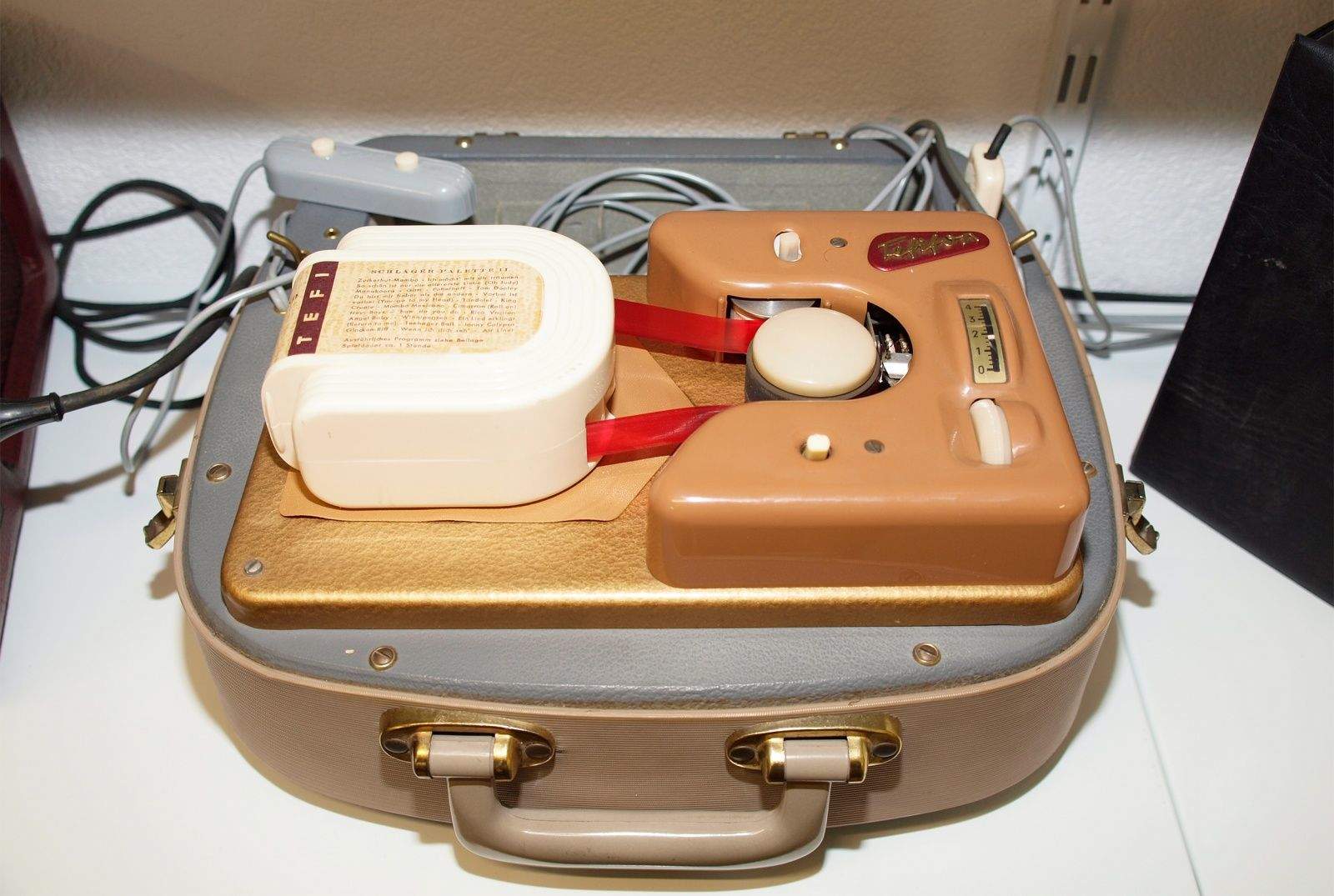The history of music is full of stories of inventors – from Edison to Apple – trying to improve the listening experience. Even formats and devices that became obsolete, such as 8-track tapes or iPods, have a lasting place in the soundtracks of our growing up.

There were also interesting ideas that flopped. Such is the category reserved for instruments like the Tefifon. If you haven’t heard of the Tefifon, then that means you probably didn’t grow up in West Germany during the 1950s and 60s.
Imagine if the 8-track tape and a vinyl record could produce offspring. The music player’s cartridge known as a Tefi would be it.

Photo: Wikipedia
The cartridge contained a continuously looped 35 mm plastic tape, on which were a series of grooves, much like a record album. A stylus would read the grooves and an amplified pickup would project the music.
This must sound primitive to today’s avid music listener who is trying to figure out whether to switch to the new Apple Music streaming service or stick with Spotify. Except for the transistor radio in the mid-1950s, music was not something that could be easily listened to on the go.
If you appreciate vintage design, the Tefifon is pretty to look at. Compared to today’s media players, though, the Tefifon is akin to rubbing two sticks together to make fire.
According to the Museum of Obsolete Media, Tefifon cartridges came in three sizes, with the largest able to hold up to four hours of music. The Tefifon tapes were said to have superior sound quality to 78 rpm records but still could not match the sound of a 33 rpm LP record.
German engineer Karl Daniel developed the Tefifon format in the 1930s mainly for military voice recordings. In the 1940s, Tefifon players and tapes entered the market, but major record companies were not interested and Daniel’s company struggled to sign acts for recording.
Daniel continued to perfect the Tefifon player, including adding stereo sound in 1961, but the format never was a commercial success. Tefifon continued to come up against the music industry’s unwillingness to record in that format. The Tefi music catalog is made up of mostly of song compilations, easy-listening music and obscure musical acts.
Tefifon made a brief U.S. appearance under the Westrex name in 1963 after it was imported and sold to Western Electric. By 1965, the German plant manufacturing the players shut down.


